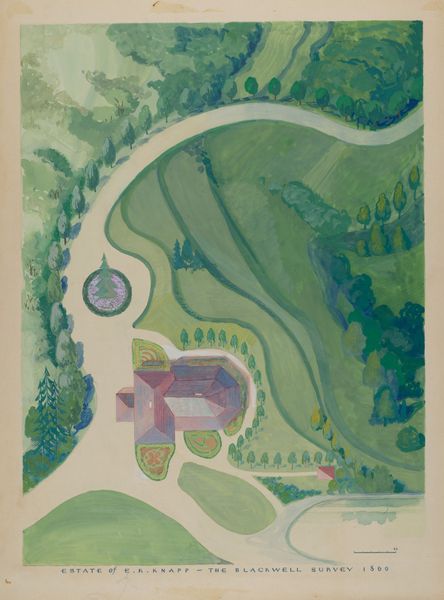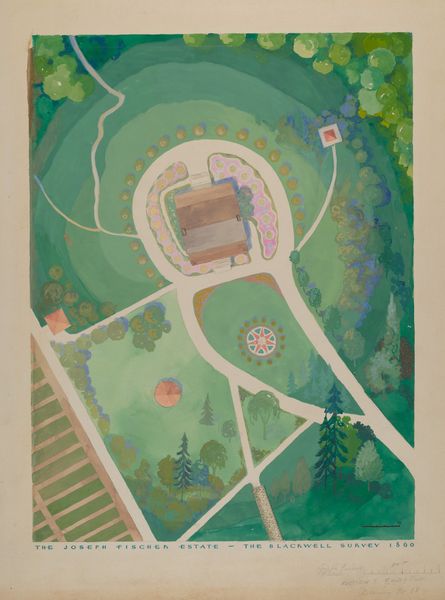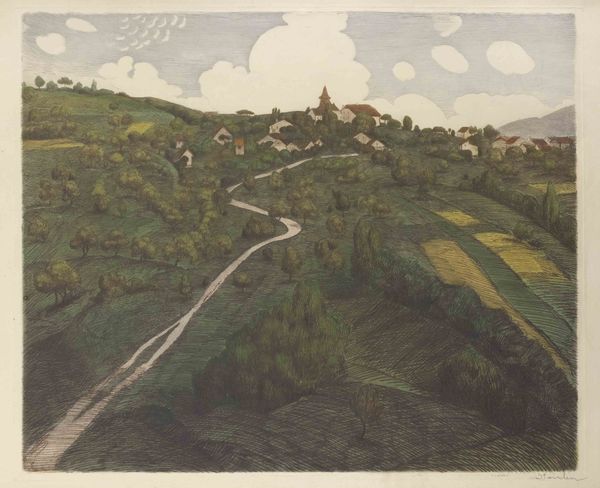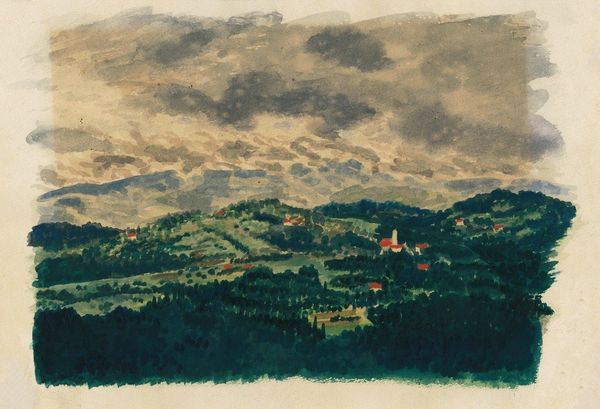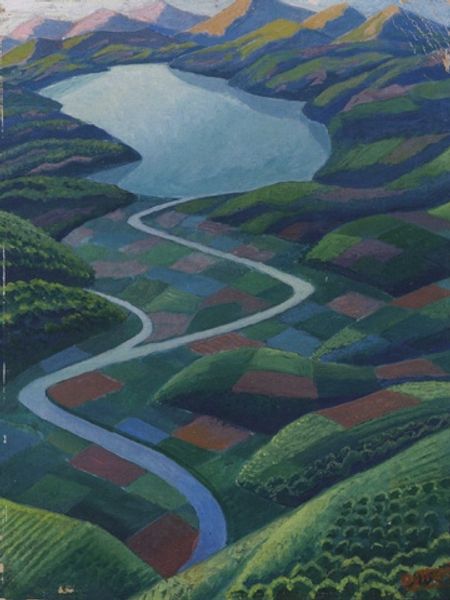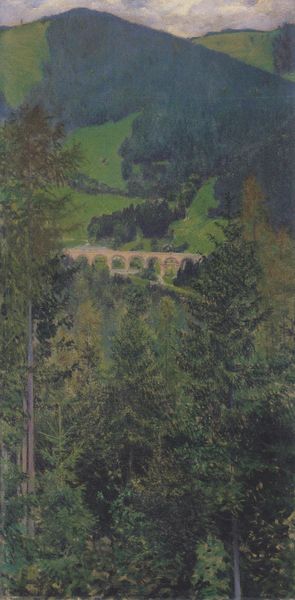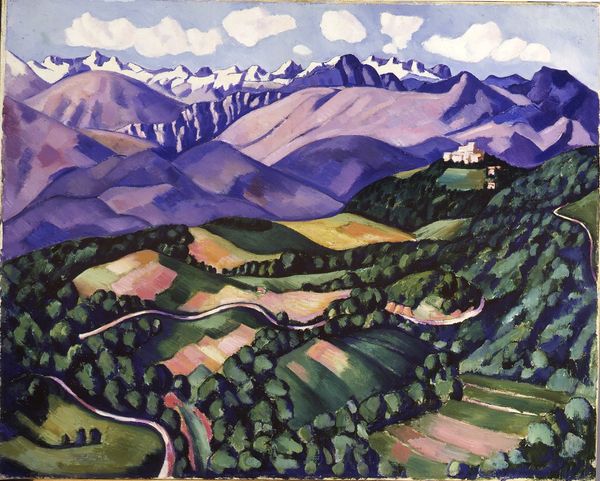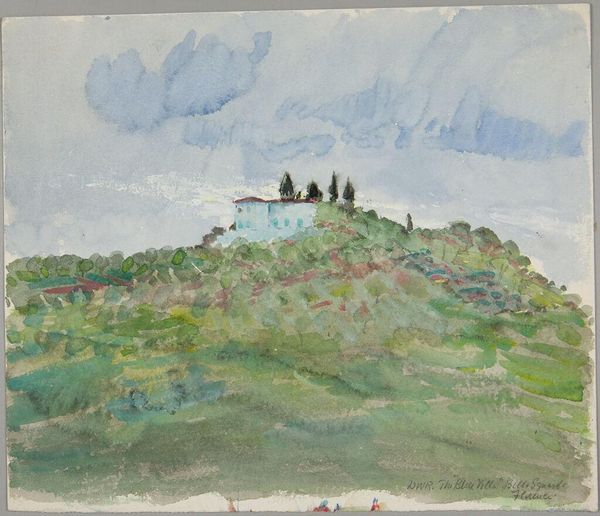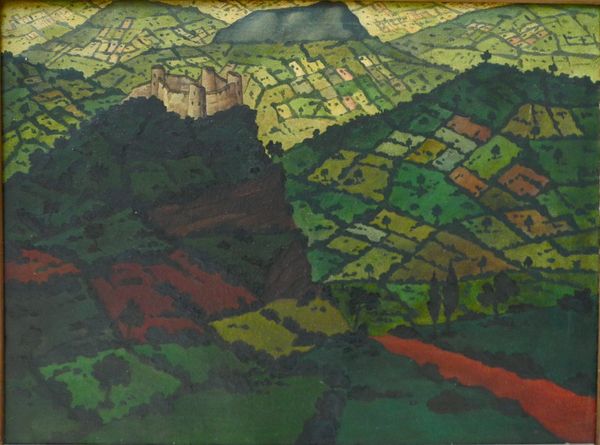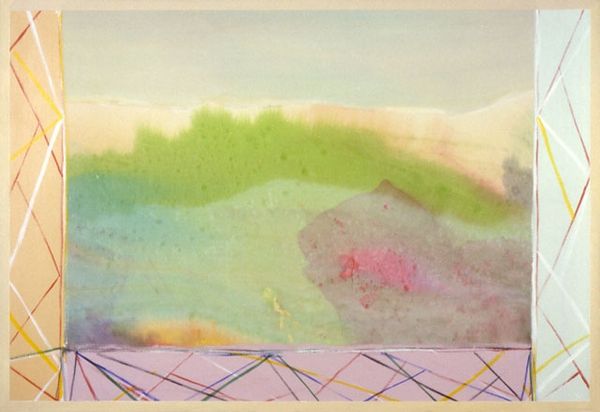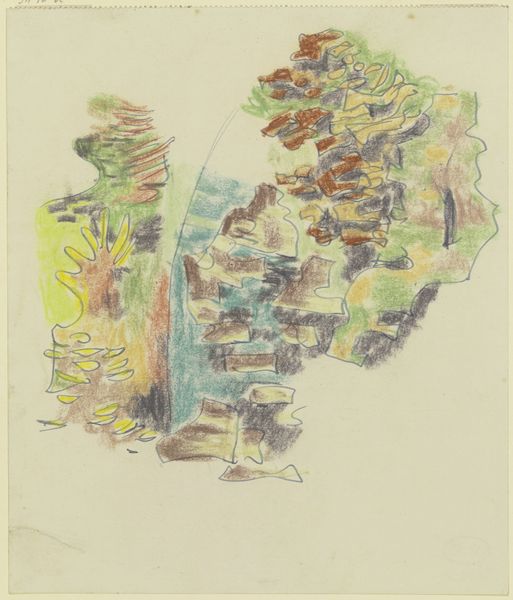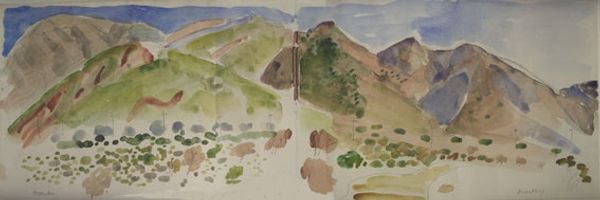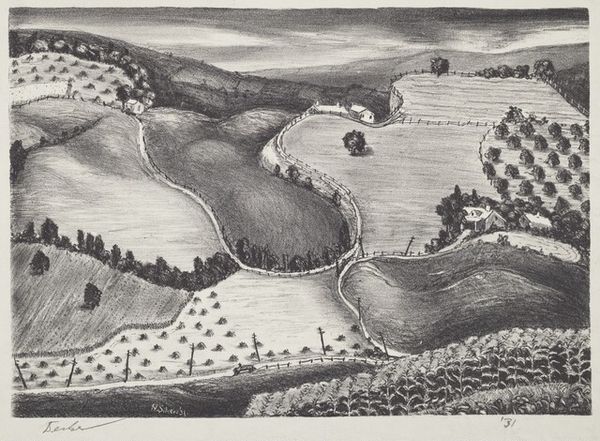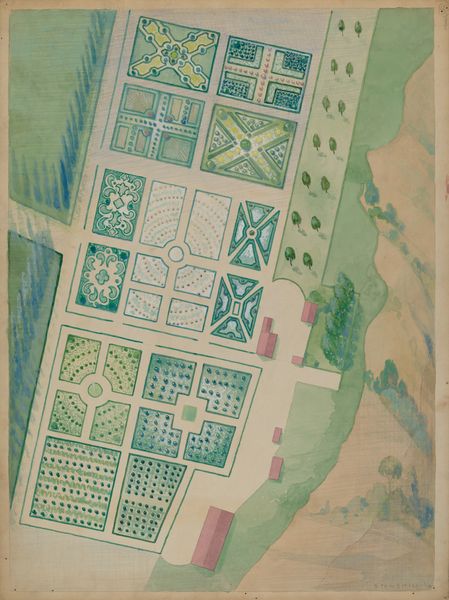
drawing, watercolor
#
drawing
#
landscape
#
watercolor
#
cityscape
#
academic-art
Dimensions: overall: 51 x 38.1 cm (20 1/16 x 15 in.)
Copyright: National Gallery of Art: CC0 1.0
Curator: Immediately striking, wouldn’t you say? It’s this flattening of space, the use of light and shadow… it almost renders the estate an abstract entity. Editor:Indeed. We’re looking at “A. M. Ferris Estate,” a watercolor drawing created circa 1936 by William Merklin. It offers a bird’s-eye view of a rather grand estate. I wonder what social narratives it speaks to? Curator: I think it is less about representation than about exploring visual organisation. Notice the lines, how the artist divides and sub-divides the landscape, almost grid-like? And that strong contrast between geometric fields and organic trees… Editor: True, the composition feels quite calculated. But it also appears to idealise wealth and property, doesn’t it? Land ownership, power… Think about the context, the Great Depression, yet here’s this almost utopian vision. Curator: A valid reading, although I still return to its pictorial qualities first. The careful application of watercolor wash, the way each zone is delineated through subtle colour changes… the estate transforms into a visual code for deconstructing nature. Editor: Perhaps. Or perhaps it reflects the American dream, this aspiration to land ownership and a pastoral ideal in an era defined by economic strife. Did these idealized landscapes perhaps influence public sentiment, maybe reinforce social stratifications? Curator: It’s a fascinating idea, definitely, to examine how it functions within that period. And yet I believe we need to always come back to the way Merklin creates a push and pull within the picture frame itself, before attempting any such interpretation. Editor: Absolutely. And considering this drawing today, we are compelled to engage in discourse not only about aesthetics but also its position within broader economic systems and historical perspectives. Curator: Precisely. Now I am eager to examine Merklin's employment of aerial perspective within a historical framework more completely. Editor: Likewise. Thank you for these intriguing visual-political perspectives.
Comments
No comments
Be the first to comment and join the conversation on the ultimate creative platform.
